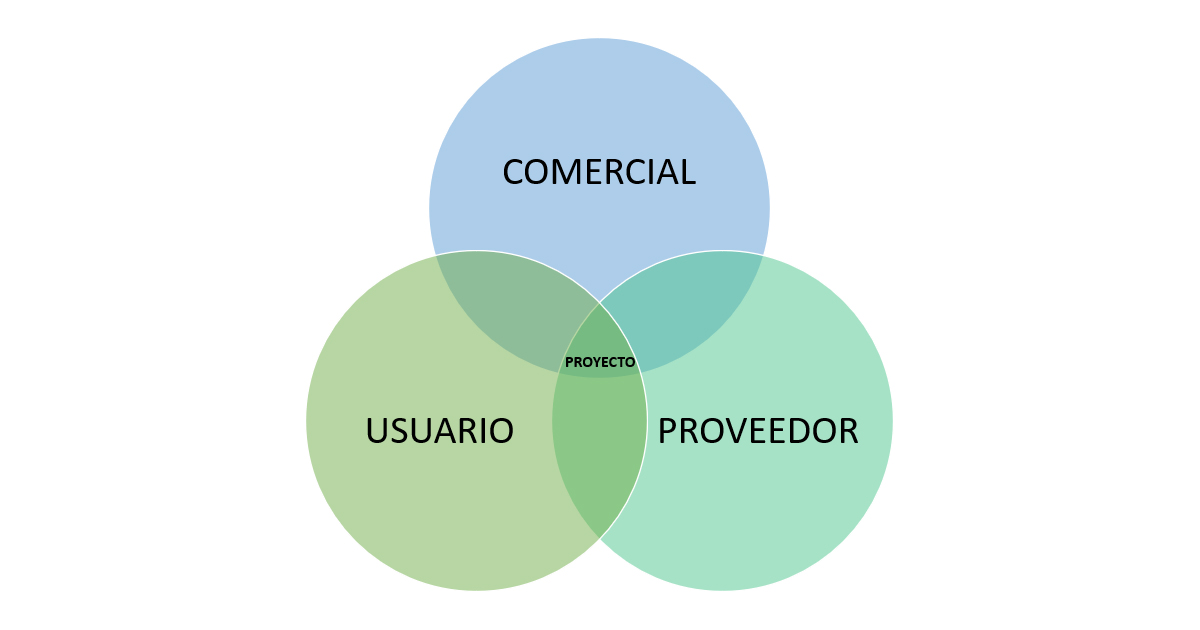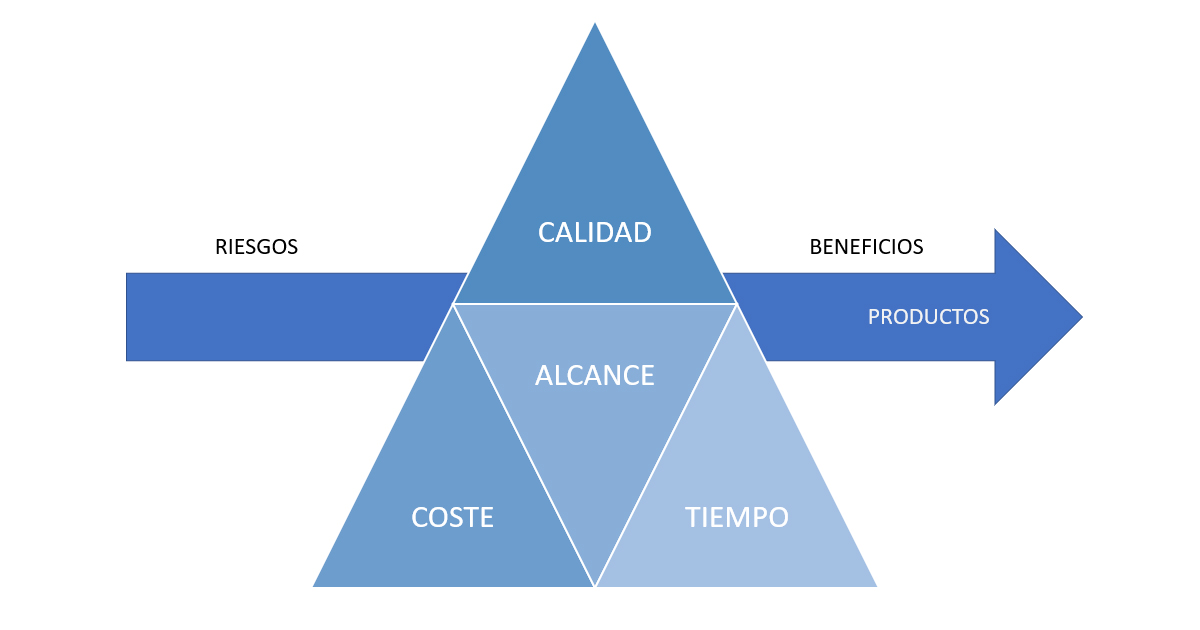This article outlines the project management methodology used at Inprosec and condenses some best practices and key concepts of the PRINCE2 project management method.
Introduction
At Inprosec we follow a project management methodology based on PRINCE2, which guarantees the management of the most common causes of project failure and, therefore, the success of our projects.
An adaptation of PRINCE2 was carried out in order to have an internal project management methodology adapted to the characteristics of our projects. To this end, the 26 mandatory PRINCE2 documents were adjusted into 8 simplified documents.
Since 2010 we have managed more than 500 end customer projects using our internal methodology based on PRINCE2.
This has also contributed to obtaining very positive ratings from our clients, obtaining a 9 average note in 2021, as we request a client rating at the end of each project. We have also obtained in the last three years more than 20 letters of good execution signed by the client in projects of more than 200 hours of execution.
On the other hand, thanks to this internal methodology, we have recorded more than 1,000 lessons learned from previous projects. From these, we have drawn up a list of the 15 most frequent lessons learned for each of our main services, which we review before starting a new project.
Project Management Methodology
PRINCE2 is a public domain project management method and has emerged worldwide as the most widely accepted method for project management.
Its main characteristics are:
- It is a method that incorporates best practices.
- It applies to any project and is standardized.
It defines project responsibilities. - It focuses on products.
- It is based on management by exception.
- Ensures that stakeholders are represented.
A Project is a temporary organization created for the purpose of delivering one or more business products according to agreed criteria. All projects are change-related, temporary (they have a beginning and an end), cross-functional (stakeholders from different areas of the organization are involved), unique and characterized by uncertainty.
Therefore, project management involves planning, delegating, monitoring and controlling all aspects of the project and motivating those involved, to achieve the project objectives within the objectives set in terms of duration, cost, quality, scope, benefits and risks.
PRINCE2 approaches project management with four integrated elements: Principles, Themes, Processes and Adaptation.
Principles
The Principles are a set of best practices that must be adhered to in the management of any project according to PRINCE2:
- Continuous business justification: there must be a justifiable reason for initiating and maintaining a project at all times.
- Learning from experience: take into account lessons learned from previous projects.
- Defined roles and responsibilities: every project must have a Project Board that will consist of:
Commercial sponsors (set the objectives and ensure value for money).
Users (represent those who will use the products, ensuring the expected benefit).
Suppliers (provide the resources needed to carry out the project).
- Management by phases: a project is planned, monitored and controlled by phases, providing control points for management.
- Management by exception: tolerances are established for the variables to be controlled (time, cost, quality, scope, risk and profit), involving the higher level of management only when these tolerances are exceeded.
- Product focus: the project focuses on meeting product quality requirements, which requires a detailed definition of these criteria at the beginning of the project.
- Adaptation to match the project environment: the PRINCE2 methodology can be adapted to any type of project and its particular characteristics.
Themes
Themes describe aspects of project management that need to be addressed on an ongoing basis:
- Business Case: the business justification, which is the reason for the project, is documented, establishing mechanisms to support decision making in its investment on an ongoing basis.
- Organization: every project must have a defined organizational structure to unite all parties under common goals.
- Quality: the products required for the project, its criteria, methods and participants’ quality responsibilities are defined.
- Plans: define the means to deliver the products (where, how, who, estimation of when and how much).
- Risk: identify, assess and manage uncertainty to improve the project’s chances of success.
- Change: identify, assess and control any potential or approved changes that affect the project baseline.
- Progress: maintain mechanisms to track and compare actual to planned achievements, provide a forecast of project objectives and their ongoing viability, and monitor any deviations outside of tolerances.
Processes
Processes describe the progression of a project’s life cycle:
- Commissioning: performing the minimum to be able to decide whether or not the project is feasible.
- Project Management: the Project Board makes key decisions and exercises overall control, delegating to the Project Manager the day-to-day management of the project.
- Project initiation: a solid foundation for the project is established, allowing an understanding of the work that will need to be done to deliver the project deliverables before committing to a major expenditure.
- Control of a phase: work is assigned, work is tracked, issues and risks are managed, progress is reported to the Project Board, and rectifications are made to ensure that the phase remains within established tolerances.
- Product delivery management: establish requirements for acceptance, execution and delivery of project work.
- Phase boundary management: ensures that the Project Board receives sufficient information to monitor the project and can make decisions.
- Closing a project: provides a fixed point to confirm acceptance of the project deliverable and verify that the established objectives have been achieved.
Key Points
At the beginning of a project it is essential to have clarity and sufficient detail of the variables to be controlled. These would be mainly Quality (through the criteria to be met by the products), Time (through the deadlines), Scope (with the detailed definition of what is or is not included in the project) and Costs (with the budget).
It is essential to identify partners and stakeholders to ensure the success of the project. Also, gathering lessons learned from previous projects that may be applicable to the current project is key. The purpose is to repeat successful initiatives and avoid repeating previous mistakes.
Once the project is underway, it is necessary to carry out continuous monitoring and proper management of the variables established at the beginning. At the same time, the client must have the necessary visibility on the status and progress of the project, in order to be able to make decisions if necessary.
Undoubtedly, another essential part will be the management of risks and problems. The identification, anticipation and timely management of these will be essential for the achievement of the project’s objectives, and will translate into a benefit for the company (whether economic or not).
PRINCE2 6th Edition Changes
Due to the evolution in the practice of project management in recent years, PRINCE2 has been updated in 2020 with the aim of making it even easier to adapt the method to different projects.
This update emphasizes the principles, restructures the themes for better adaptation, defines the relationship between the principles and the themes and provides some recommendations for customizing projects with this new version.





